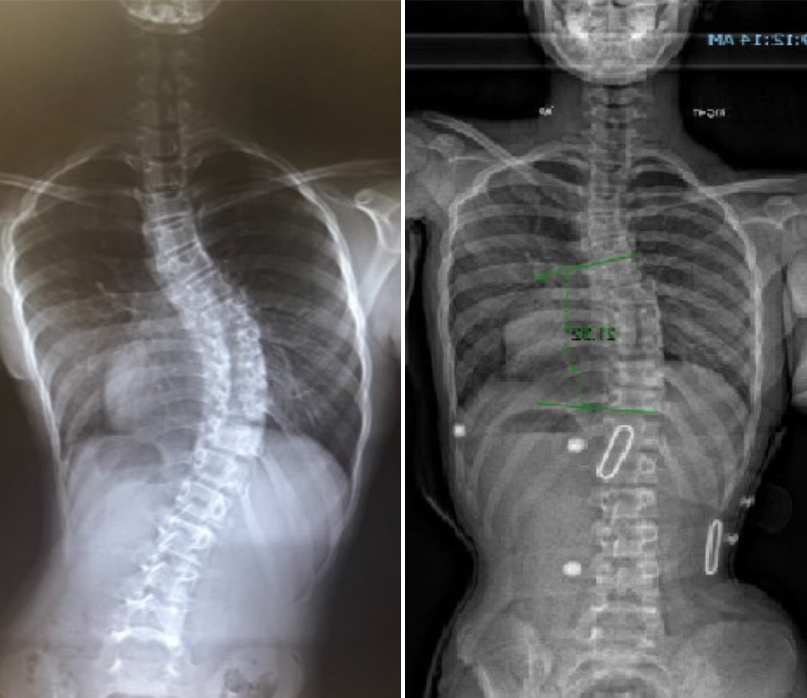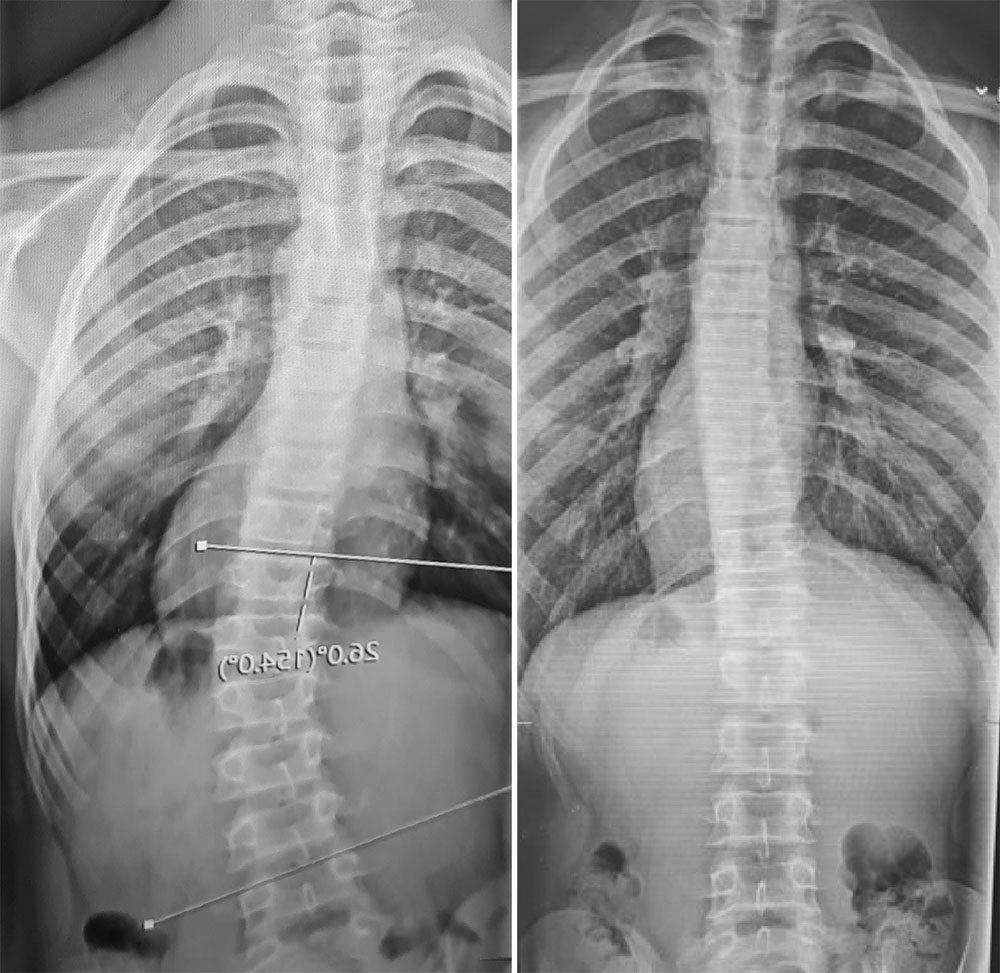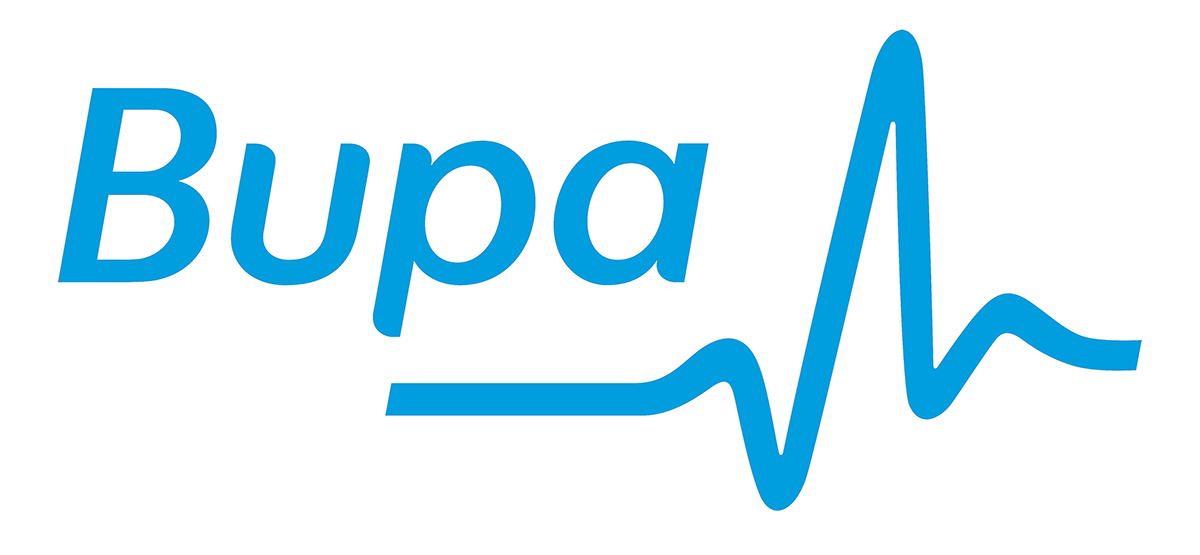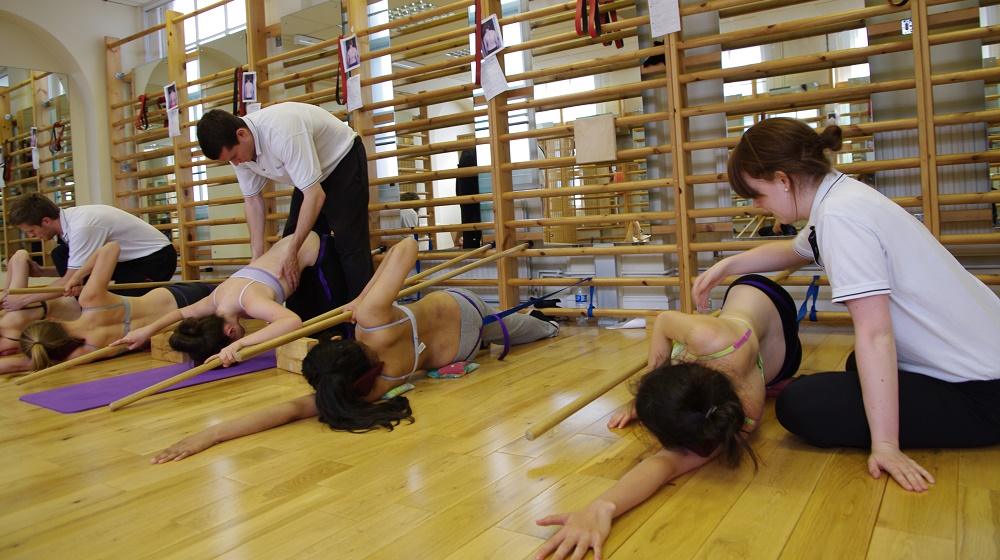At the London Orthotic Consultancy, we believe that a correctly assessed, designed and fitted three-dimensional brace will help stop the progression of scoliosis and prevent the need for surgery in later life.
For minor curves, usually of less than 20°, a patient’s curve will be monitored to ensure it does not worsen while the patient undertakes a tailored exercise programme based on Schroth principles which includes some general postural advice to help self-manage the condition.
Typically, for curves of 20-40°, we would advise patients to opt for non-surgical treatment through bespoke bracing and physiotherapy as it is non-invasive.
Our patients have had excellent results with a Cheneau-Gensingen brace over the last five years and this has continued with our bespoke version of the Cheneau brace, the LOC Scoliosis brace, which we have been fitting since 2022.
Historically, surgery has been indicated for those who present with Cobb angles over 45 degrees. However, there is growing evidence supporting the use of asymmetric CAD/CAM braces in such cases.

Before treatment (left), after LOC Scoliosis Brace treatment (right)
Above is an example of correction in a LOC Scoliosis brace in a 14-year-old female who presented with a 60-degree curve. This shows the power of accurate, clinician-led modeling in the design of asymmetric bracing.
The brace works by gently and progressively guiding the patient’s spine into a more correct position, whilst being more comfortable and less restrictive than other braces. The brace should be worn for 22 hours a day for the initial 6 weeks of treatment.
After the initial appointment, one of our specially trained scoliosis clinicians will take the necessary scans and measurements and the bespoke brace will be modelled in-house, manufactured at our Kingston clinic, and then fitted by one of our specialist clinicians.

Before treatment (left), and after 10 months of wearing the LOC Scoliosis Brace part-time (right)
The above x-ray shows before and after bracing results in a 15-year-old male. The patient's Cobb angle went from 26 to 0 degrees after just 10 months of wearing the LOC Scoliosis brace part-time.
Anna Courtney, the clinical lead for scoliosis at LOC, is now registered with BUPA who should cover most if not all of the cost of our Scoliosis treatment package. Please have your pre-authorisation number ready when you call to book your appointment.
If you have private medical insurance with other companies please contact that company directly to enquire about cover for this treatment. We note that you remain fully responsible for the timely payment of your bill in the event that BUPA or any other health insurer does not pay.


The LOC Scoliosis Brace takes a three-dimensional approach to scoliosis treatment. This type of bracing is regarded by many scoliosis clinics around the world as the preferred alternative to surgery, since it has been proven to reduce Cobb angles and improve posture.

Our bespoke scoliosis treatment can be combined with a comprehensive physiotherapy programme that adheres to the principles of the world-renowned Schroth treatment.
Our treatment package price includes all reviews and on-site adjustments of the brace by our certified orthotists.

There may be cancellations or delays to your child’s spinal surgery for several reasons. At LOC, we are here to assist where possible. Using our corrective LOC Scoliosis Brace, we can halt the curve's progression, balance posture and reduce any back pain.
To provide specialist physiotherapy to back up our non-surgical bracing treatment for Scoliosis, we have teamed up with Scoliosis SOS which was founded in 2006 by clinic principal, Erika Maude, following her own experiences with scoliosis.
Originally Scoliosis SOS treated patients using the Schroth alone but found that there were elements of postural correction that Schroth was unable to address by itself. There is no ‘one-size fits all' approach as each programme that Scoliosis SOS provides is curve-pattern specific and designed bespoke for each patient. Over the years they have developed what could be termed a Schroth plus therapy which they call the ScolioGold method.
Schroth treatment remains a central part of the treatment programme but it is now enhanced by other well established therapeutic techniques. Various specially developed exercises are used to strengthen muscles and normalise posture.

image courtesy of ScoliosisSOS
Several factors will influence whether surgery is recommended by a surgeon and vary from person to person. Often treated as a last resort, surgery is left for the most serious of cases – typically only for curves with Cobb angles of 45° or more. Other considerations to consider include the likelihood of the curve progressing, how much pain or irritation it is causing to the nerves of the spine and the risk of development of more complex medical issues.
Age is also an important factor; surgery for young adults with adolescent idiopathic scoliosis (AIS) has lower complication rates compared with adults with degenerative scoliosis. Surgery for adults is less common and often offered as a last resort to alleviate symptoms of extreme pain or discomfort. Whatever the age group there are risks of complications; these are described in the independent Cochrane review found here.
The operation used to treat severe scoliosis curves is typically spinal fusion surgery; a major procedure that involves moving muscles and realigning the skeleton into place. The curved, deformed vertebrae are fused together into a single bone, putting metal screws and rods into the spine to help straighten it. Surgery typically lasts between 4 and 8 hours depending on the severity of the curve. Bone graft is then taken from other parts of the body and used to cover the implants.
Following the operation, it is necessary to spend around a week in intensive care before returning home and the first few days are often uncomfortable. Most adolescents can expect to return to school from 2-4 weeks following surgery, but pain medication may be required up to 6 weeks following. A full recovery from the procedure can take up to a year, as it can take that long for the spine to heal fully.
Spinal fusion surgery causes the fused portion of the back to become permanently stiff, as a result, returning to sports that require large amounts of flexibility (ballet, yoga, gymnastics, dance) or contact (rugby, football, karate, hockey) may take longer.
Risks of spinal fusion surgery are like that of any other major procedure and include infection, blood clots and anaesthesia complications. The added risks include permanent nerve damage to the spine and paralysis.

Join The London Orthotic Consultancy in celebrating Cerebral Palsy Awareness Day on March 25th. Learn just how important expert orthotic care is in enhancing mobility, independence, and quality of life for children and adults with cerebral palsy.

Introducing the Agilik™ smart orthosis, a cutting-edge, powered knee orthotic now available in the UK through the London Orthotic Consultancy. Unlike traditional KAFOs or heavy exoskeletons, the Agilik™ provides dynamic knee assistance and offers real-time support, reducing fatigue and improving posture. This pioneering, modern technology can help children and adults with lower limb weakness walk more efficiently and naturally. We are honoured to be selected as the exclusive paediatric specialist centre in the UK for the Agilik™ device.

When Sophie noticed her baby Max had a persistent flat spot on his head, she was told it would resolve naturally—but it didn’t. Seeking a second opinion led her to the London Orthotic Consultancy, where Max was diagnosed with severe plagiocephaly.

A little more than four years after the LOCband Lite's launch, we're proud to have successfully treated our 250th helmet therapy patient at our Romford clinic using our cutting-edge 3D-printed cranial band. After five months of treatment, her final scan showed that her asymmetry had decreased from 12 mm to 3 mm.

Sky News published an article this month quoting scientists at Southmead Hospital who claimed there was a lack of research into flat head syndrome and its treatment with cranial remoulding (helmet) therapy. This is our response.

With our non-surgical treatment plan, Alex achieved 100% chest correction in just two years. His treatment involved a combination of dynamic chest compressor and vacuum bell therapy treatment to address his pectus excavatum and rib flaring.

Learn how a custom carbon fibre AFO helped Gill regain mobility and comfort despite complex challenges from shin bone (tibia) removal. We created a truly tailored orthotic solution made from pre-preg carbon fibre at our Cambridge clinic.

Discover how bespoke orthotics and the OSKAR program with Elaine Owen transformed Archie’s life with cerebral palsy quadriplegia, helping him avoid a wheelchair and achieve greater mobility.